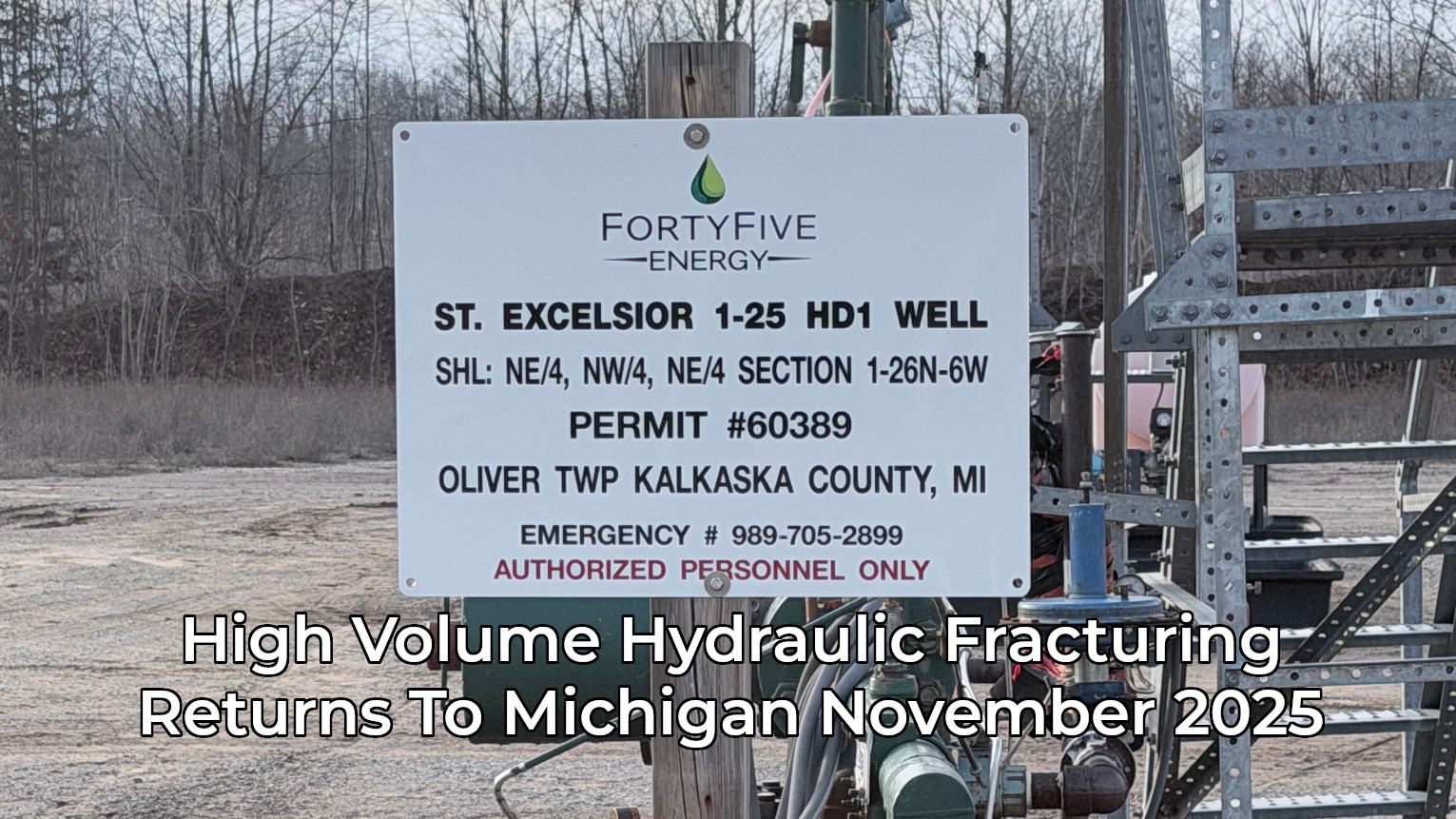Category: Michigan
-

High Volume Hydraulic Fracturing Returns To Michigan November 2025
In a move no one expected after a 12-year hiatus, FortyFive Energy LLC of Midland, Texas has filed an application for a permit to drill and complete a new horizontal test of Michigan’s deep Collingwood formation. The proposed State Excelsior 1-14 HD1 represents the first return to large-scale, high-volume hydraulic fracturing (HVHF) in Michigan since…
-

RMP’s 3rd Generation Gelman 1,4 Dioxane Plume Map
Did you know RMP was the first Michigan organization to publish an interactive map of the Gelman 1,4 Dioxane Plume? RMP remains the only non-profit 501(c)3 organization in Michigan to offer a free interactive map of the Gelman 1,4 Dioxane Plume. RMP published the 1st interactive Google Map of all locations in the Pall Science…
-

The Failure of Edenville Dam & Sullying of Lake Huron: Safety -vs- Vanity
Could the Edenville Dam Catastrophe have been avoided? Maybe. A term you’ll be hearing in the coming weeks is “legal levels” of the lakes. But what does that mean? RMP found two comprehensive documents that shed light on the situation between the Four Lakes Task Force & Boyce Hydro & The State of Michigan. Click…
-

Gelman DIoxane 1,4 Plume Map Ann Arbor Michigan
RMP has just launched our first Generation 2 Google Map featuring the Gelman Dioxane 1,4 Plume in Ann Arbor, Michigan. Check out our new map & see how easy it is to learn all about the Gelman Dioxane 1,4 Plume by watching a short YouTube video.
-

2016 Michigan Hydrocarbon Production Results – Full Year
RMP publishes 2016 hydrocarbon production data. Check out this post to see how much oil, natural gas, and NGLs were produced in Michigan in 2016. We have charts, graphs, and numbers and three different top 10 lists.
-

Michigan Oil & Gas Monthly – December 2016
RMP has been publishing the Michigan Oil & Gas Monthly for 24 months straight. This will be the last monthly publication of this magazine. We simply don’t have the funding to continue publishing a monthly magazine. If you’re a regular reader like so many thousands of other people across Michigan, please consider making a tax-deductible…
-

Michigan Oil & Gas Monthly – October 2016
In the October 2016 MOGM we look again at the issue of putting Antrim Shale Wells on a vacuum system. We look at the numbers, like always, and we end with some final thoughts on how the word “fracking” has ironically set back environmental protection.
-

2016 Michigan Hydrocarbon Production Results January – June
At this point in October of 2016, all the reporting through the first six months of 2016 is complete. RMP has again downloaded, parsed, and analyzed the Michigan hydrocarbon production data for the Michigan Basin. Click through to check out our reporting and graphical analysis of Michigan Basin production. This post’s cover photo was taken…
-

Carbon Capture & Sequestration (#CCS) – Michigan’s Leading Role
Michigan is playing a leading role in Carbon Capture & Sequestration (#CCS). Developing solar & wind as renewable energy resources is very important, but there is a reality that fossil fuels will provide a majority percentage of global energy for many decades to come even if every single world citizen & legislator focused on eliminating…
-

Michigan Oil & Gas Monthly – September 2016
Click here to read respectmyplanet.org’s September 2016 – Michigan Oil & Gas Monthly magazine. Each month RMP keeps our readers in the Michigan Basin up to date on oil & gas news and activity. RMP is a Michigan based 501(c)3 non-profit organization dedicated to the responsible migration away from crude oil as an energy source…
-

Michigan Oil & Gas Monthly – August 2016
Michigan oil & gas activity gets busy in August of 2016. August has more applications for new wells than all seven previous months of 2016 combined. We have an applications for Carbon Dioxide Sequestration, High Volume Hydraulic Fracturing (HVHF), as well as applications to explore the Trenton Group in Lenawee & Monroe Counties. The HVHF…
-

Michigan Oil & Gas Monthly – July 2016
This month a group calling themselves the MICATS staged a protest at Attorney General Bill Schuette’s home in Midland, Michigan. The Detroit News has a story here. For the record, I have never supported extremist groups or individuals like those in MICATS and neither has respectmyplanet.org. I don’t know them, affiliate with them, or in any way…